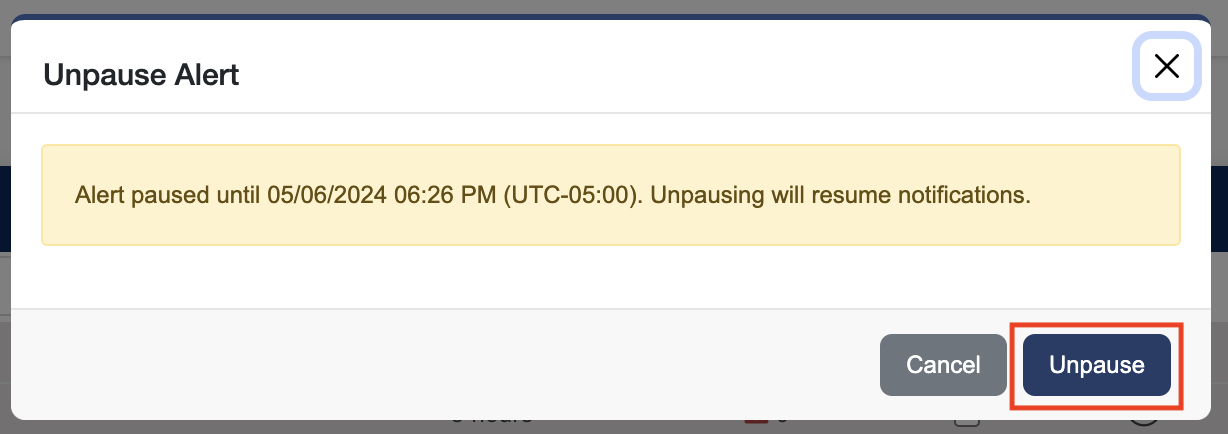EMX alerts are used to generate notifications when specific conditions are met. This involves defining three things:
-
Destinations are an email or phone number (for SMS texts) that can receive alert messages.
-
Groups are collections of destinations.
-
Alerts are criteria that specify when notice should be sent to multiple Groups and Individual Destinations.
Four Key Steps for Creating and Managing Alerts in EMX:
1. Packet Power adds the appropriate number of email messages (free) and text messages (fee) to your account. This enables the email or SMS channel for an account.
Contact support@packetpower.com if you need changes made.
2. Create Destinations by adding the name and contact info (email or phone number).
3. Create Groups and add Destinations to combine multiple destinations into one (Optional).
4. Finally, create the Alerts and select the Groups and Destinations to which notifications should be sent and the monitoring units you wish the alert to apply to.
Adding Destinations
-
Navigate to Settings > Notification Destinations
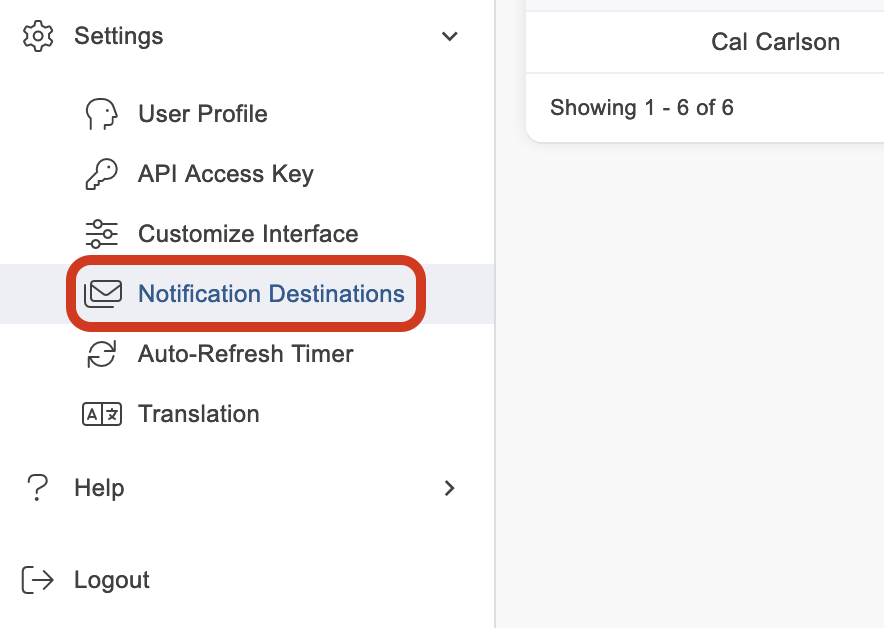
-
Click the Actions drop down in the upper right corner and select Add.
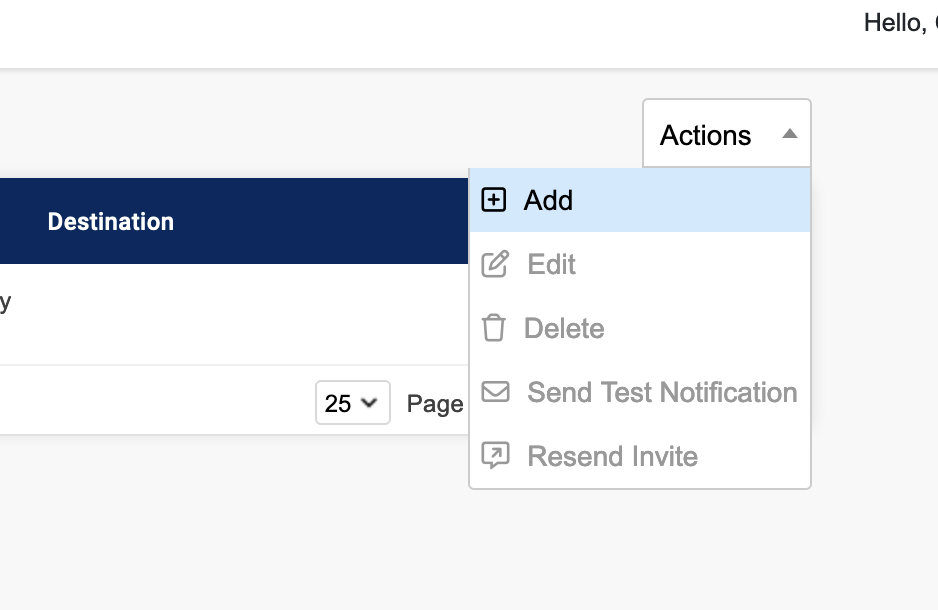
-
Name: Usually the name of the individual who will receive the notification, i.e. John Smith, etc.
-
Type: Choose email or SMS from the dropdown menu (if adding type Group see Adding Groups below). Nothing will appear in the drop down menu if messages have not been allocated to the account. Contact support@packetpower.com if this occurs.
-
Destination: Enter the email address for Email type or a phone number for SMS type. If using SMS, the entire phone number should be entered including country code (i.e. 1 for USA, 44 for UK) but excluding any "0s" that may precede the country code.

-
Click the blue Add button to submit.
-
After an Email or SMS destination has been added an invite will be sent to that destination. The receiver must verify they are accepting to receive notifications from EMX in order to be added to Groups or receive any notifications. You can see the status of this in the status column of the table. To resend an invite select the destination, click the Actions drop down and select Resend Invite. (Invites cannot be sent to groups).
-
To send a test notification to a SMS or Email destination select the destination, click the Actions drop down and select Send Test Notification. (Test notifications cannot be sent to groups).
-
Repeat to add additional destinations.
Adding Groups
-
Navigate to Settings > Notification Destinations

-
Click the Actions drop down in the upper right corner and select Add.

-
Name: Usually the name of the Group who will receive the notification, i.e. Acme Data Center Operations, etc.
-
Type: Choose group from the dropdown menu.
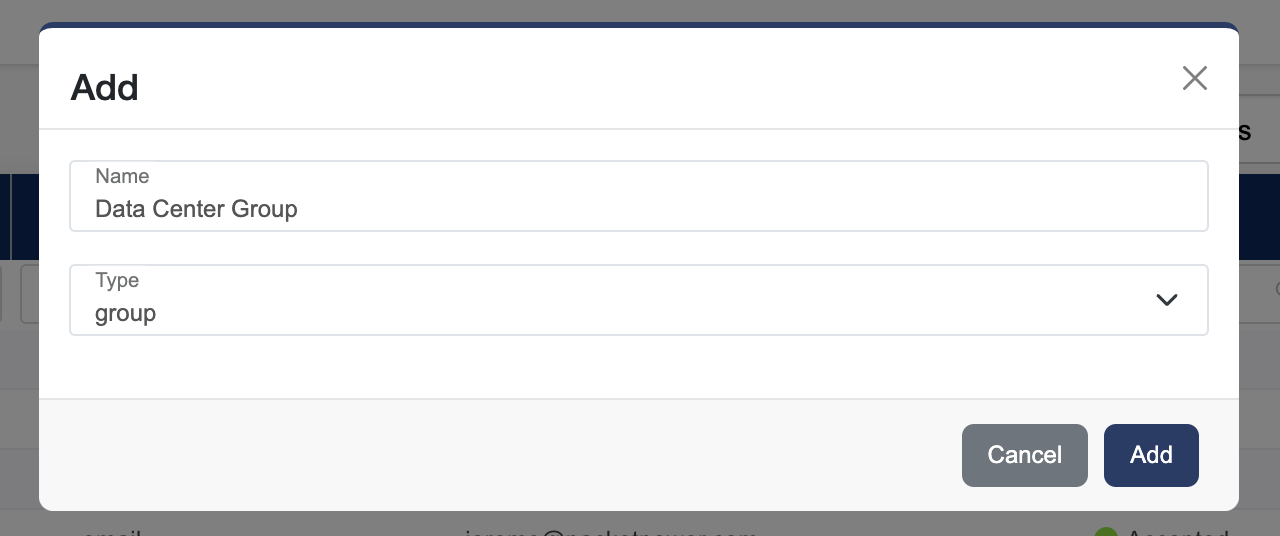
-
Click the blue Add button to submit.
-
After a group has been added, you can add destinations to the group by clicking Add Destinations in the Destinations column.

-
This will pop up a list of destinations that have been accepted (see Adding Destinations above for more information on Status). To add a destination to this group check the Add checkbox.

-
Check as many destinations as you want to add then click Close.
-
To remove a destination from a group uncheck the Add checkbox.
-
Repeat above steps to add additional groups.
Creating Alerts
-
Navigate to Alerts → Node Alerts.
-
Click on the Actions drop down then click Add.

-
Add a Name and Timeout for your alert then click Next.
-
Timeout refers to the notification timeout. For example: If set to 1 hour, you will no longer receive an alert notification (email or SMS) past 1 hour of when the initial alert was triggered.
-

-
Add Nodes to your Alert.
-
Click the Node GUID select to choose a Node then click Add Node. Continue this for each Node you want to add.
-
To remove a Node click the X icon.
-

-
To bulk add or remove Nodes by clicking on the button next to Add Node.
-
Click Assign (to add) or Unassign (to remove) then add your list of GUIDs and click Apply.
-

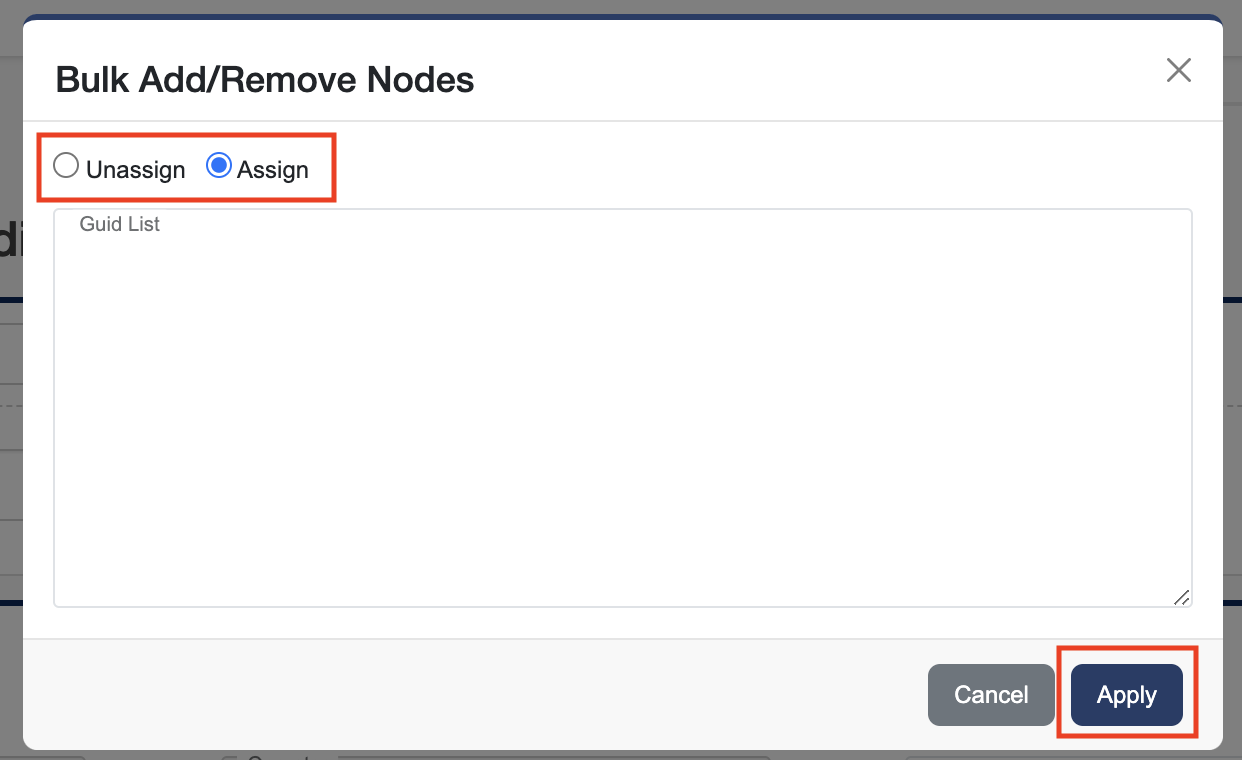
-
Add Conditions to your Alert.
-
Select a Channel (The attribute for which you desire an alert (i.e. kW, Most recent report, etc.). If you are setting up a timeout report (i.e. alert if a device hasn't communicated in x amount of time) choose the "MostRecentReport" Channel).
-
Select an Operator
-
Select a Value (The value for the selected Channel. For example: If you chose Current as the Channel and want to be alerted at a threshold of 24 Amps, enter "24" in the Value field. The Value for time-based alerts such as MostRecentReport, should be entered in seconds (1 hour = 3600 seconds).
-
Click Add Condition
-
-
Repeat for each condition you want to add.
-
To remove a Condition click the X icon.
-
Click Next after all nodes and conditions have been added.

-
Add Notification Destinations.
-
Select a Destination from the select (for more information please refer to Adding Destinations above).
-
I you need to go to your Destinations table click Manage Destinations. After adding a new destination here click the refresh icon to refresh the destination options.
-
Click Add Destination.
-
Repeat for each Destination you want to add.
-
To remove a Destination click the X icon.
-
Click Submit to finish adding your alert or click Previous to go back a step.
-

Editing Alerts
To edit an alert, simply select an Alert, open the Actions dropdown and click Edit. Then follow the steps for creating an alert except instead of creating a new one, you'll modify elements of an existing alert.

Turning Alerts On and Off
-
Navigate to Alerts → Node Alerts.
-
Find the applicable alert and click the check box in the Enabled column to turn the alert on or clear the check box to turn it off.
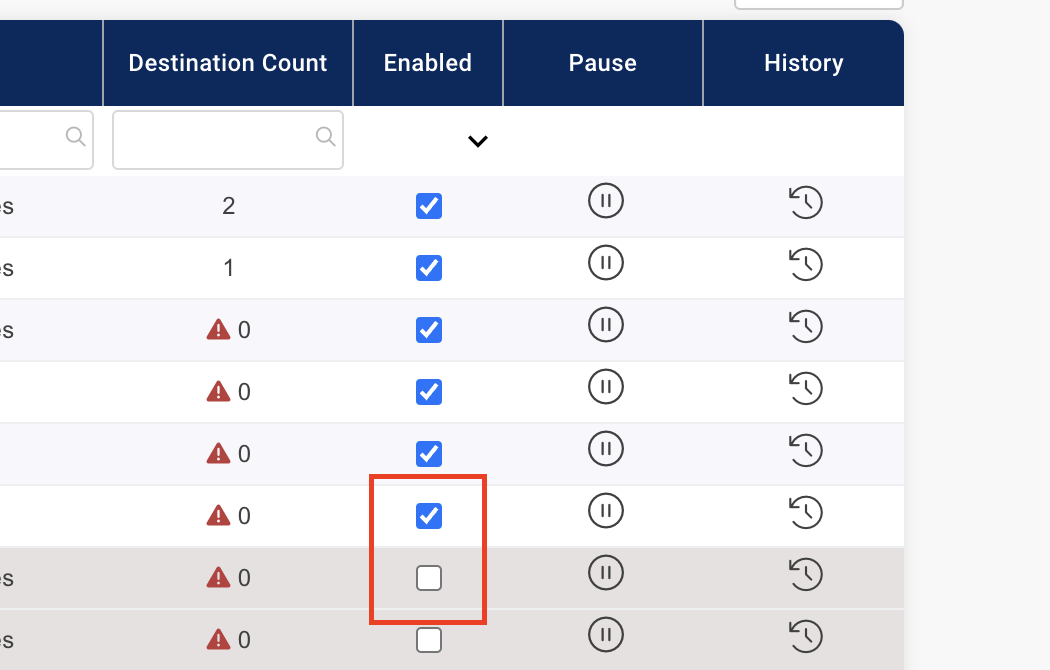
Pausing and Unpausing Alerts
Pausing an Alert:
-
Click the Pause Icon in the Pause column.
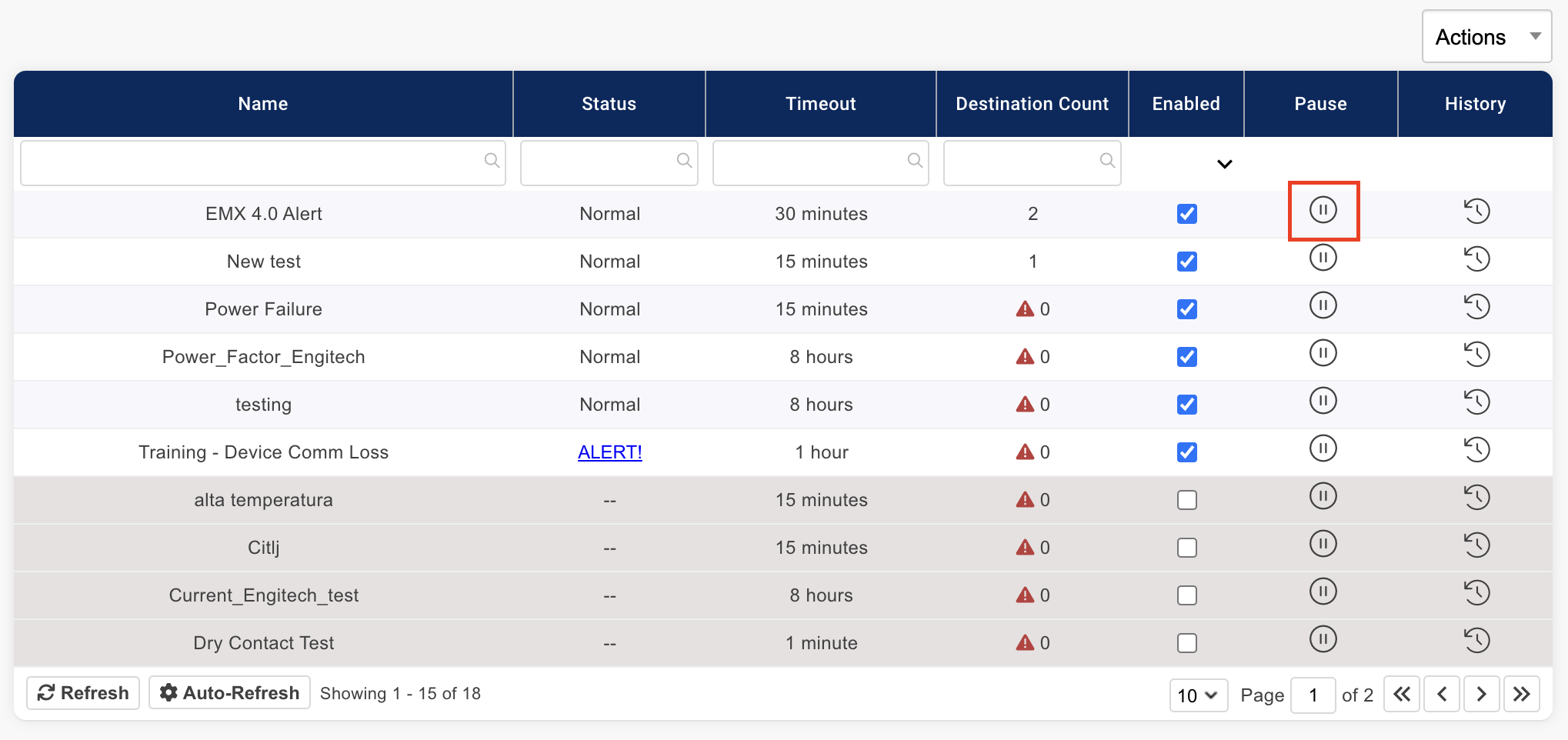
-
Then set the amount of time you want your alert paused for and click Submit.
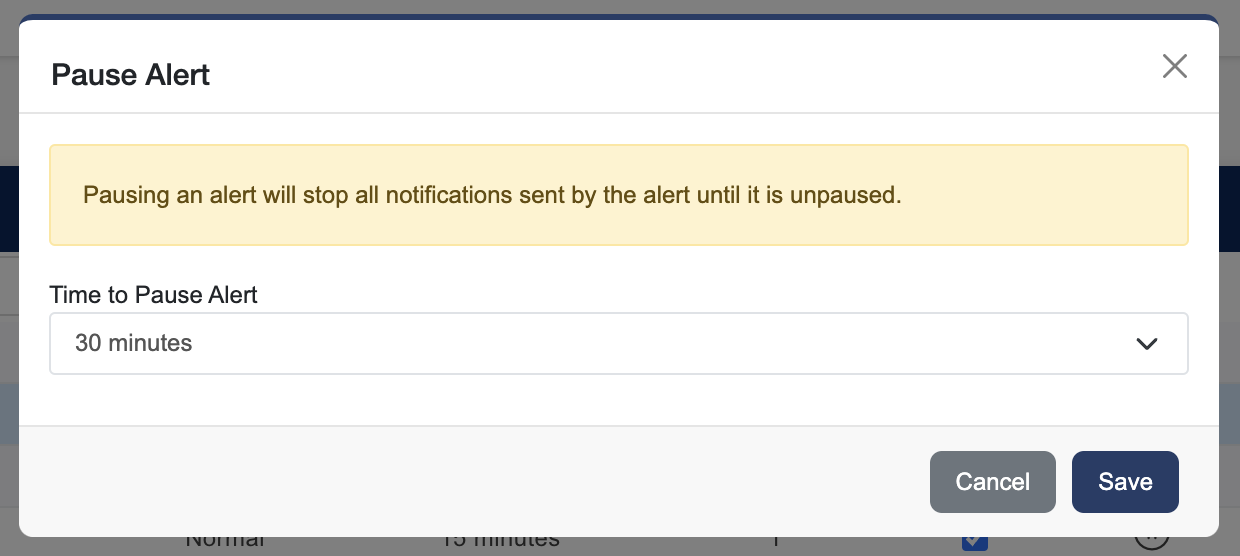
Unpausing an Alert:
-
Click the Play Icon in the Pause column.

-
Then click Unpause.
